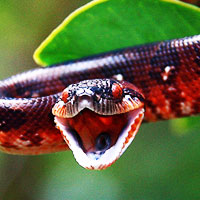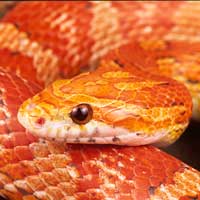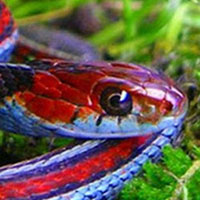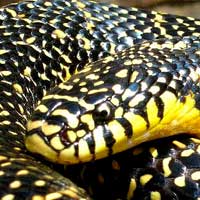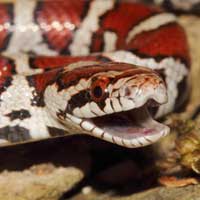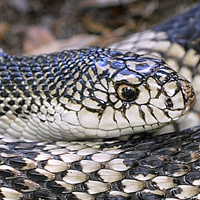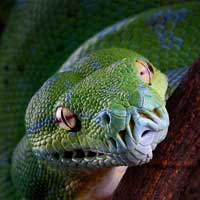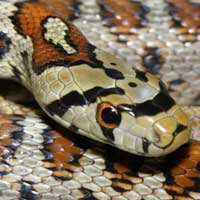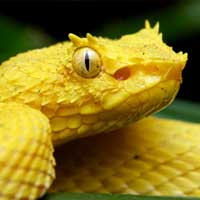Eastern Garter Snake: Everything You Need to Know About This Fascinating Species
The scientific name of the Eastern Garter Snake is Thamnophis sirtalis sirtalis. It belongs to the snake family Colubridae, which is the largest snake family and includes many non-venomous or mildly venomous snakes.
Scientific Name: Thamnophis sirtalis sirtalis
Snake Family: Colubridae
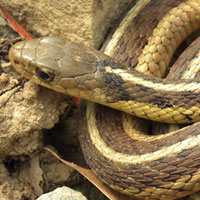
Introduction to the Eastern Garter Snake
The Eastern Garter Snake (Thamnophis sirtalis sirtalis) is one of the most widespread and recognizable snakes in North America. Known for its striking stripe patterns and adaptability, this non-venomous snake thrives in a variety of environments. Whether you’re an enthusiast or a beginner in herpetology, understanding the Eastern Garter Snake is key to appreciating its role in the ecosystem.
Exploring the Natural Habitat of the Eastern Garter Snake
The Eastern Garter Snake thrives in diverse environments, ranging from woodlands to marshes. Its adaptability allows it to survive in urban areas, including backyards and gardens.
Common habitats include:
- Forests and wooded areas
- Fields and grasslands
- Near ponds, streams, and wetlands
- Suburban yards with access to shelter and water
Below is a summary of their preferred habitats:
| Habitat Type | Key Features | Why Suitable |
|---|---|---|
| Woodlands | Dense vegetation | Provides cover and hunting ground |
| Wetlands | Water sources | Supports prey like frogs and fish |
| Urban Areas | Gardens and debris piles | Safe refuge and ample food |
What Do Eastern Garter Snakes Eat? Diet and Feeding Habits
The Eastern Garter Snake is an opportunistic feeder, consuming a wide variety of prey. Its diet mainly consists of small animals and amphibians, making it a valuable predator in controlling pest populations.
Common prey includes:
- Frogs and toads
- Fish
- Earthworms
- Small rodents
- Insects
Feeding frequency varies based on age and size, with juveniles eating more frequently than adults.
Understanding the Behavior and Temperament of the Eastern Garter Snake
The Eastern Garter Snake is known for its docile and curious nature. When threatened, it may release a foul-smelling musk or display defensive behaviors such as flattening its body to appear larger.
Key behavioral traits include:
- Activity: Diurnal, active during the day
- Hibernation: Overwinters in burrows or rock crevices
- Social Behavior: Often found basking in groups
Despite its defensive tendencies, the Eastern Garter Snake rarely bites and is generally safe around humans.
Health and Lifespan: Keeping Eastern Garter Snakes Healthy
With proper care, the Eastern Garter Snake can live up to 10 years in captivity. In the wild, their lifespan is often shorter due to predators and environmental challenges.
Common health concerns include:
- Parasites: Internal and external parasites can affect their health.
- Respiratory Infections: Often caused by poor humidity levels.
- Mouth Rot: Results from bacterial infections.
Maintaining optimal temperature and humidity levels in their enclosure is crucial for their well-being.
The Reproductive Cycle of the Eastern Garter Snake
The Eastern Garter Snake is ovoviviparous, meaning it gives birth to live young. Mating typically occurs in spring after hibernation, and females can store sperm for extended periods to ensure successful fertilization.
Key reproductive facts:
- Mating season: Spring
- Gestation period: 2-3 months
- Litter size: 10-40 live young
Young snakes are independent from birth and begin hunting immediately after their first shed.
Tips for Handling and Caring for Eastern Garter Snakes
The Eastern Garter Snake is a popular choice for beginner snake owners due to its manageable size and temperament. Proper care involves setting up an appropriate enclosure and handling them gently.
Care tips include:
- Provide a secure tank with hiding spots and a water dish.
- Maintain a temperature gradient of 75-85°F.
- Feed appropriately sized prey to match their growth stages.
- Handle sparingly to reduce stress and build trust over time.
With consistent care, these snakes can thrive and become rewarding companions for herpetology enthusiasts.
